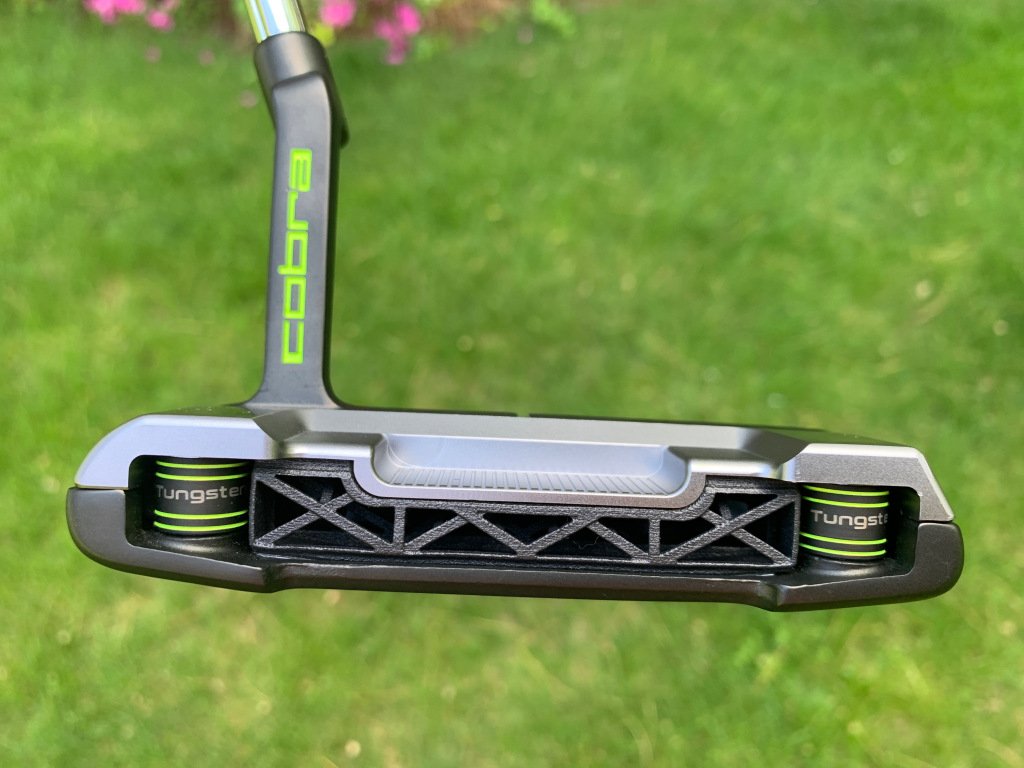After releasing a limited-edition putter line in November 2020, Cobra Golf is back and this time it has announced a complete family of 3D printed putters. With 10 different heads to choose from, the King 3D Printed series is demonstrating that additive manufacturing has officially made it to the world of consumer sporting goods.
The King Supersport-35 putters released last fall were the result of a collaboration between Cobra, HP, and HP’s metal 3D printing service partner, Parmatech. Made using HP’s Metal Jet process, the putters were 3D printed in 316 stainless steel. Naturally, the design featured lattice geometries that significantly reduced the weight.
Cobra has shifted gears (would “changed its grip” be a more suitable metaphor for golf?) to use HP’s MultiJet Fusion (MJF) technology to 3D print nylon heads for its King 3D Printed putters. Nylon offers half the weight of aluminum, but the strength and durability of metal was still required, with Cobra placing these nylon lattice “cartridges” between steel bodies, forged aluminum crowns, tungsten back weights, and aluminum face inserts.
The 3D printed portion reduces weight in the head’s center, while the non-printed metal components allow for greater forgiveness. Additionally, Cobra claims that the lattice structure cuts vibrations and sound. The heads are then attached via KBS CT Tour Straight Stepless Chrome shafts to Cobra Connect Lamkin Sinkfit grips that feature Arccos sensors.
Alongside the King 3D Printed series is a new King Vintage line. Golf lovers can see a full breakdown of each club in the collection here. The King 3D Printed series has a retail price of $349 per club, which is just $100 more than traditionally manufacturing King Vintage series. They’re all available for pre-sale at the moment and will be officially released on June 4, just in time for Father’s Day.
A low-cost putter runs for about $150, meaning that, for a high-end putter, Cobra is not charging all that much. As Executive Editor Joris Peels has previously pointed out, luxury sports equipment is a sector ripe for disruption via 3D printing. While his focus was on handles and sticks, Cobra has demonstrated how the technology can optimize the heads themselves. We already see adidas working on midsoles, Arevo tackling bikes and e-bikes, and a slew of companies competing for 3D printed helmets.
We’ll now want to see more tennis rackets, hockey sticks, and lacrosse equipment, but 3D printed putters may have just become the most accessible way for consumers to get additively manufactured items into their lives—particularly, if the King 3D Printed line isn’t a limited run. Otherwise, we’ll be waiting for adidas to ramp up the production of its shoes or have to go the medical route and wear some 3D printed hearing aids or 3D printed orthotics.
Cobra is the gulf subsidiary of German athletic apparel manufacturer Puma. Puma is company with about €5.50 billion (2019). We’re still a long way from more ordinary consumer items being 3D printed—that is, non-luxury goods. We’re also still far from mass-customized putters. So, I won’t say “3D printing is here” quite yet, but Cobra has at least brought 3D printing onto the green of consumer goods.
